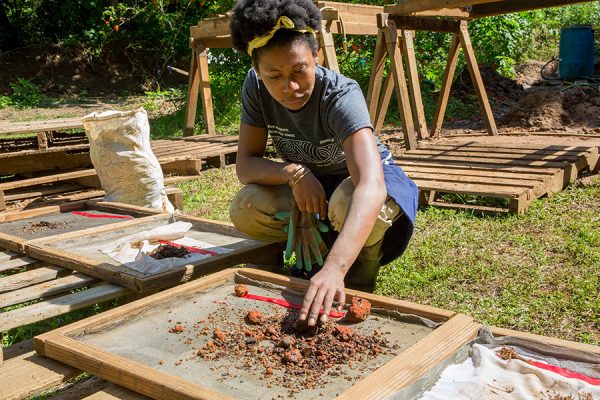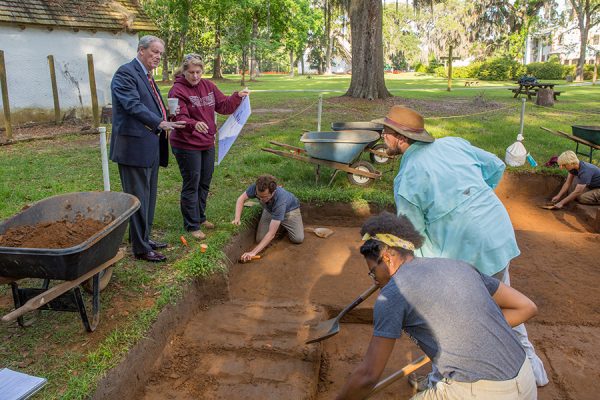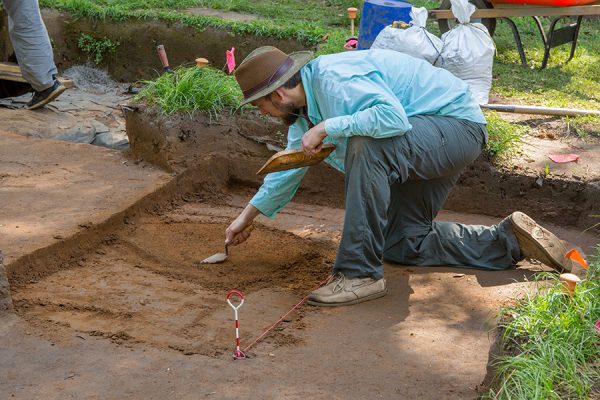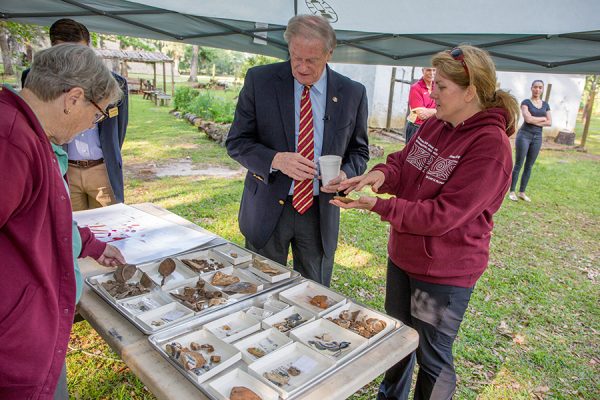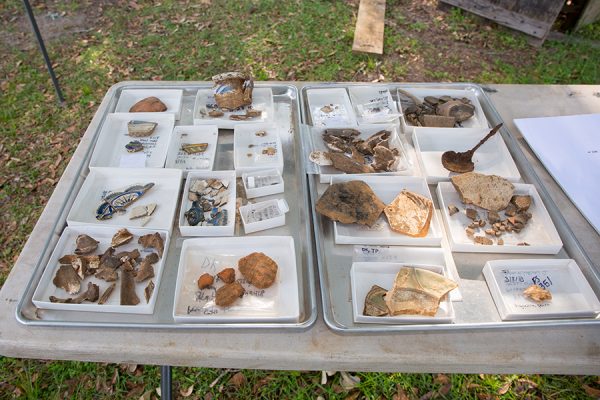Back in a corner of the grounds of a 17th century Spanish mission, FSU students and their professor have been spending a lot of time digging in the dirt.
The site is Mission San Luis and the students and their professor are working on the first archaeological dig in 10 years at the living history museum that was the shared community of Spanish priests and the Apalachee. They are excavating the former location of a Spanish house that may have also been the spot of an Apalachee structure.
There are few written documents from the site, so it’s a gold mine for researchers trying to learn about the time period.
They are searching for anything that can tell them more about how the Spanish and Apalachee lived. They’ve found beads, ceramics, seeds, bones, architectural remains and carbonized food.
“The end goal for research is to find more evidence of this dual Apalachee-Spanish occupation so we can learn more about the Apalachees who were here,” said Associate Professor of Anthropology Tanya Peres.
The point of the dig is two-fold. Peres is an expert on the southeastern United States and how cultures lived and worked, so the dig will help further her work in understanding how the people of the 17th century lived in this region. It’s also an experiential learning course for FSU students.
Both graduate students and undergraduates work alongside Peres unearthing tiny artifacts and food remains that tell the story of the Spanish and Apalachee at Mission San Luis. The field course is certified by the Register of Professional Archaeologists, meaning a panel of professionals has ensured that students are learning proper surveying, water screening, digging and artifact processing techniques.
“They get to practice all those skills over and over and over,” Peres said. “My goal for them — if they want to get a job doing this — is to go out and get hired right away and not need any extra training because they’ve already done everything. That’s really important.”
San Luis served as the principal village of the Apalachee from 1656 to 1704 and also served as the westernmost capital of Spanish expansion in North America. It housed more than 1,400 residents including an Apalachee chief and a Spanish deputy governor.
On the site, several Spanish and Apalachee structures have been reconstructed so the grounds closely resemble the 17th century village. However, archaeologists are still trying to learn more about this capital of the Spanish La Florida.
Many of Peres’ students have spent their time digging on the site of the former Spanish house. They had found chunks of clay floor – common in Apalachee homes – and some posts that may have been part of the structure as well.
“It’s like a puzzle with no cover photo,” Peres said.
While Peres will be spending months analyzing artifacts from the dig, it has already yielded results for her students. Several graduate students have developed ideas for their master’s theses and undergraduate students are pursuing research projects as well.
“It has real historical importance, and so it is critical that we learn more about the people who lived here,” Peres said.






